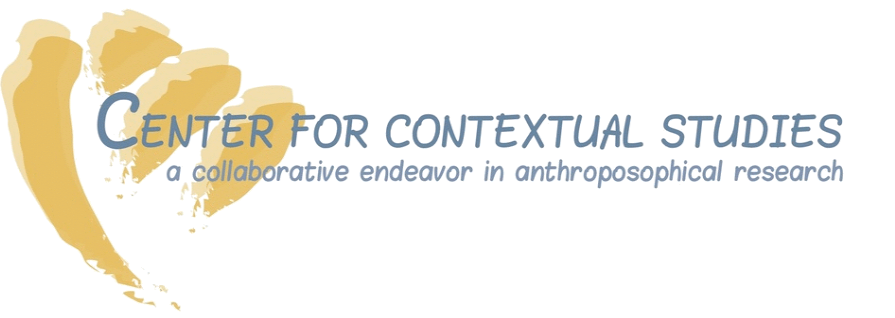I think that one of the biggest challenges with living into Steiner’s way of thinking is that we first meet it as words on a page. That is, we meet it through a medium that is linear and two-dimensional. Pages have no depth and reading would be quite a different undertaking if the lines of type were to dance and weave before our eyes. Yet Steiner’s thinking is both mobile and evocatively deep. When he speaks of the process of embodiment, the bringing of the soul/spiritual into a sculpturally reciprocal relationship with the bodily organism, he is describing a process that takes place in time and space, yet is defined by neither. The rhythm of breathing goes hand in hand, for instance, with the experience of meaning. Meaning cannot be measured nor can it be generalized. It arises in the way I place myself in relation to what I meet. It is individual and intangible.
The experience of meaning is an inner experience. It arises when we allow ourselves to be touched and moved by something. There is nothing objective or distanced here. It is real in a different way than the fragrance of lavender or the first hint of whiteness in the twigs of a wild cherry. Understanding the nature of the spiritual and the role the experience of the spiritual plays in human development rests on our ability to distinguish between such various expressions of realness.
When Rudolf Steiner speaks of the rhythm of breathing and that of sleeping and waking, he asks us to be attentive to the role such different qualities of realness play in the learning process. We learn to observe the ways individual children connect with the world they meet through their lessons and we learn to be attentive to how these moments of connectedness metamorphose in the night.
During the day, our inner life is connected with the existence of our body within the context of earthly reality. We awaken to the world through our senses, we experience ourselves within the terrestrial forces. During sleep our inner life is no longer connected in this way to the bodily organism. In Steiner’s terminology, the soul/spiritual frees itself from the life body. It enters into a state of being that is not defined by bodily existence in an earthly environment. The influence of the tangible recedes, the soul/spiritual (astral organism and I) find themselves in an environment constituted of the intangible quality we can recognize in the experience of meaning. Ernst-Michael Kranich describes this as “a deeper form of awakening” (1). He identifies five aspects of the work that takes place in the night: The soul/spiritual is free to develop according to its own lawfulness. Things that have brought about a feeling of confusion during the day clarify themselves. Thoughts and ideas grow deeper and wider. Emotions are calmed and the truth of the situations in which they arose becomes apparent. Intentions are formed that flow into waking life. As teachers, we are called upon to craft children’s waking so that what they meet in the day can live on and grow in the night.
The intimate beauty of the relationship between breathing on the one hand and the inner rhythm of waking and sleeping on the other becomes apparent. Through the interplay of breathing rhythm and conceptualization, the child takes up into consciousness what they experience as meaningful in their encounters with the world. It lives on within the context of their inner life and accompanies them when they awaken in the realm of the intangible into which they fall asleep. It grows with them through the night becoming more strongly a part of them and casting a new light upon the world they awaken to in the morning.
by Jon McAlice
